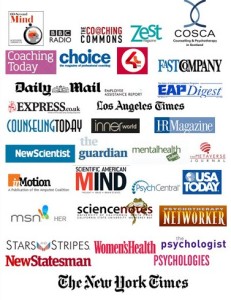Reel Culture
By Jean-Anne Sutherland, Ph.D.
Two lovers struggle against and with their passion for one another. Their lives are such that they can’t say it out loud – can’t claim one another in their day-to-day lives. Separated, their thoughts turn to one another. Together they know a passion, a connection and a love they’ve yet to find with another. Jack is ready to claim the relationship in his life but Ennis remains locked in fear. His angst concerning social condemnation ensnares him in denial. Jack, aware that he can’t push Ennis to a place he is unwilling to go is reduced to anger and tears. Tired of their separation, emotionally depleted by the hopelessness of their passion, Jack says to Ennis, “I wish I knew how to quit you.”
That line, “I wish I knew how to quit you,” has become a kind of iconic symbol of a gnashing, impossible and seemingly impossible love. The movie (Brokeback Mountain 2005) and the line struck a chord with audiences – tapping into feelings of loss, hopelessness and contradiction. Gay or straight, viewers of this film have the opportunity to come face to face with relationships dynamics, the integration of identities, feelings of loss, heartbreak, and a visual representation of the price of fear.
Increasingly therapists and academics use film in their work in order to illustrate concepts, conditions or experiences. While myths once served to illustrate the beliefs, values and behaviors of its people, films now provide us with glimpses into our culture. Like literature, movies instruct, entertain, offer principals and ideologies, values and, life lessons. Films can both reinforce stereotypes and challenge viewers with new interpretations of old themes. Films show us the development of individuals as they struggle with identity and self-esteem. In movies we watch characters interact within the contexts of relationships. Films are a new kind of “text” through which we are provided stories, frames, and representations of social life. Just as mental health professionals have long integrated other mediums such as literature and music into counseling, films provide an opportunity for clients to view the representation of an otherwise abstract idea.
Therapists know that people are more likely to view a movie about addiction than to read a text about the subject. At present there are multiple texts and websites for specific instruction concerning film and therapy. Resources range from the specific “how-to” to the theoretical. It follows that as access to films expand, use of film in the therapeutic setting will increase. Important considerations involve appropriate “readings” of films – placing them within the larger social and historical context in which they are produced. While films strike at the heart of issues, they don’t themselves capture the complexity of the issue. Films are an ideal tool for illustrating life, pain, loss and, joy. The work of the therapist is to frame those representations in such as way as to provide meaningful analysis for the client. As Buddy (Kevin Spacey) reminds us in Swimming with Sharks (1994) “Life is not a movie. Good guys lose, everybody lies, and love… does not conquer all.”
Jean-Anne Sutherland, Ph.D. is assistant professor of sociology at University of North Carolina Wilmington, USA with one of her research focuses being sociology through film.
This article first appeared in the September 2010 Premier issue of TILT Magazine ~ Therapeutic Innovations in Light of Technology a bi-monthly magazine published by the Online Therapy Institute.
.
Link to original publication: http://issuu.com/onlinetherapyinstitute/docs/premier/29
…
SUBSCRIBE to TILT Magazine ~ Therapeutic Innovations in Light of Technology
…


